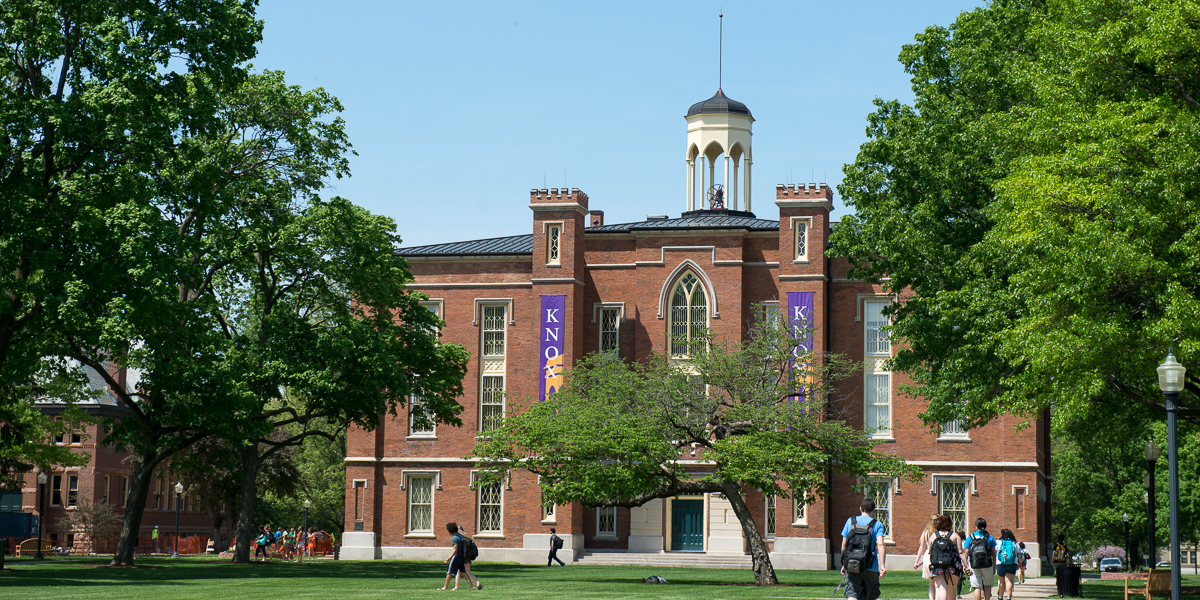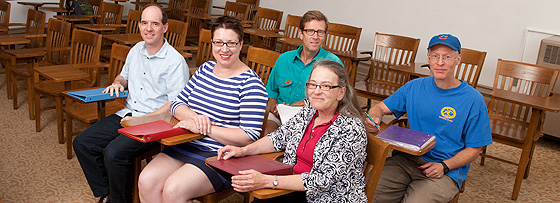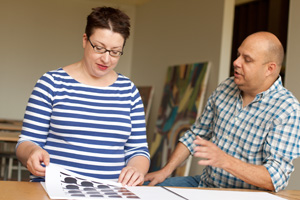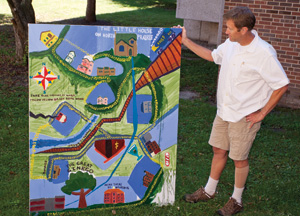

Venture Boldly


By Adriana Colindres
In his 20-plus years as a Knox College faculty member, Physics Professor Tom Moses has stood in the front of numerous classrooms, helping students understand the intricacies of such concepts as electromagnetism and quantum mechanics. From time to time, he has taken on an additional classroom role -- as a Knox student.
Moses has enrolled in more than a dozen Knox classes, studying chemistry, French, and Spanish. Most recently, during the 2013 winter term, he delved into the topic of 20th-century Spanish-American literature in a class taught by Tim Foster, associate professor of modern languages and literatures (Spanish).
Moses acknowledges that studying languages has "nothing to do with physics."
"I think that's why I like it," he said. "It's just different. It's refreshing. Your physics brain can be tired out, but your language brain isn't tired out. That was a great discovery."
Moses, who studied French in high school, feels his language skills have advanced significantly. "I can listen to French radio now and know what's going on," he said. "Spanish radio is still a challenge. I'm working on it. Reading books is no problem. I've got to look up some words -- more in Spanish."
"I always learn a lot from each class," Moses added. "There's the subject, on the one hand. But it's just fun to see different people's teaching styles. I learn a lot from that, and I'm sure it's made me a better teacher."
Other faculty members also have sampled the Knox curriculum as students. A few of them include:
All say they enjoy taking classes at the College, and they do it for various reasons, including a general love of learning and a desire to gain specialized knowledge they can apply in their work. Some of them take classes for credit, while others audit or simply sit in on an informal basis.
Schneider said he wanted to take a statistics class mostly because of his new responsibilities as an associate dean.
"I'm involved with program reviews and assessment activities," he said. "So many of those activities are heavily dependent on the understanding of statistical measures, and I thought this is a good time to brush up on those concepts."
Denial was interested in Stedman's class because the subject matter directly relates to the Public History class she teaches. In that course, students research and build a museum-quality exhibit revolving around a particular topic, such as World War II.
"I loved the idea of being able to take a class again and to start over, learning something new that I really didn't know anything about," she said. "I hoped it would help me teach my Public History course better, be able to explain to students why certain things work visually in a museum setting and certain things don't."
Now that she has completed Stedman's class, Denial is certain it will prove helpful when she teaches Public History in the future.
"It gave me a better appreciation for what is compelling -- visually -- and how to adapt that to doing museum work," she said. "It made me much more thoughtful about the whole visual, creative process."
 Stedman praised Denial's contributions to his class, saying she "took the class very seriously and brought a great work ethic."
Stedman praised Denial's contributions to his class, saying she "took the class very seriously and brought a great work ethic."
"This was exemplified not only in the work that she created but also in her participation in classroom discussions of readings and critiques," Stedman added. "Her expanded knowledge base added to the level of discussions, as well as her informed nuances that fellow students and I each gained from."
By taking classes at Knox, faculty members provide real-life examples of lifelong learning. Receiving a diploma from Knox doesn't mark the end of an individual's education.
"As I remind my students, it's called ‘Commencement.' It's not called ‘The Grand Finale,'" said Scotton. "It's how you begin to go learn."
Allison added: "If you're a professor, I think you're invested in the idea of lifetime learning, that you're always a student."
Allison said the classes he's taken have helped him develop a greater appreciation for art and for his relationship to the environment. He sees deep connections between the fields of art and science.
 "The kind of science I do, and really all science, starts with observation. You have to see something that you think is interesting or unusual, and I think that's something you're doing as an artist, too-observing, looking for something interesting, something that stands out," he said.
"The kind of science I do, and really all science, starts with observation. You have to see something that you think is interesting or unusual, and I think that's something you're doing as an artist, too-observing, looking for something interesting, something that stands out," he said.
"The other thing I think they have in common is that science and art are both very concerned with process," he added. "They're both very much driven by getting into the process and doing the work, and you learn as you do the work."
Allison and other faculty members say they feel a duty to be diligent, responsible students when they take classes at Knox.
"I really have to be able to do as well as I possibly can and be fully committed," he said. "People know you're a faculty member. If you aren't fully engaged and fully participating, I think it would set a bad example."
Moses said he tries to be "an especially good student -- show up on time, come to every class, set a reasonably good model, participate a little, not too much, so that other people can get a chance."
Faculty members who have taken Knox courses say their classmates generally regard them in the same way as they do any other student. Before beginning Stedman's art class, Denial said, she worried a bit about whether students might give her special treatment and might feel "I deserved a certain amount of respect as a professor."
"They disabused me of that really quickly," she said, laughing. "They treated me exactly the same as everybody else. They felt very comfortable critiquing my work, just like they critiqued everybody else's. We fell into this great rhythm where I really was one of them, learning for the first time like they were."
"I think part of it had to do with the fact that we were all there doing the same thing. We were all there to learn a brand-new skill," Denial added. "I also think that Knox students tend to be very adventurous, ambitious. They like being challenged, and this was just another challenge, to incorporate me into the classroom."
Denial, Scotton, Moses, Schneider, and Allison all agree they'd like to take additional classes at Knox whenever possible. Narrowing down their choices might present a bit of a challenge, though. "I'm so curious about so much of what my colleagues do. It's just such a pleasure to get to learn from them," Denial said. "I would love to take a class in the sciences. I would love to take something in sociology. I'd love to do a language."
Scotton, when asked what subject areas might appeal to her, replied, "Oh everything." "Pottery. Physics. I've never taken a physics course. I'd love to take a writing class. There isn't anything I can imagine not wanting to take."